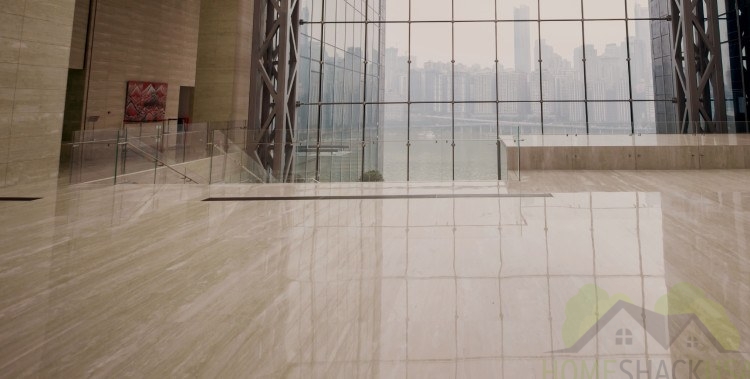When it comes to selecting the perfect floor to live on in a multi-story building, various factors come into play, including safety considerations and personal preferences.
Each floor level has its own set of advantages and potential risks. In this article, we will delve into the safety aspects and other factors associated with different floors, helping you make an informed decision about your future residence.
The ground floor – safety and convenience
The ground floor, also known as the parterre, offers a unique blend of convenience and safety. One of its primary safety advantages lies in its proximity to exit doors.
During emergencies, such as fires or evacuations, residents on the ground floor have the advantage of quick and easy access to safety. This can be a crucial factor when every second counts.
Security on the ground floor
On the downside, ground floors are often more susceptible to security concerns, particularly in urban environments.
Their proximity to street level can make them vulnerable to break-ins and unauthorised access. To counter these security risks, it is essential to invest in robust locking systems, alarm systems, and, if possible, secure fencing or gating.
Middle floors – a balance of safety and convenience
The middle floors, which are the intermediate levels between the ground and the top, offer a balanced combination of safety and convenience. They are typically not too high to make evacuation difficult, but also not at street level, which can reduce security risks.
Access and safety
From a safety perspective, the middle floors strike a chord of equilibrium. In case of emergencies, residents can reach the ground floor or exit the building relatively easily compared to higher floors.
This balance makes the middle floors an attractive choice for those who prioritise safety without compromising on accessibility.
The top floor – views and challenges
The top floor of a building often provides some of the best views and privacy. However, it comes with its own set of safety considerations and challenges.
Views and privacy
One of the most enticing aspects of living on the top floor is the panoramic view it often offers. Whether it’s the city skyline, scenic landscapes, or simply a sense of detachment from the hustle and bustle below, the top floor can be an oasis of tranquillity.
Additionally, the absence of neighbours living directly above can lead to a quieter living environment.
Safety on the top floor
From a safety perspective, the top floor can be advantageous in certain scenarios. It is less prone to issues like flooding, which can affect lower floors during heavy rainfall.
However, during a fire or other emergencies that require evacuation, the top floor can pose challenges. Evacuating from a greater height takes more time and effort, and residents must be aware of this when choosing this option.
High-rise buildings: height and safety
In high-rise buildings, the considerations for safety become even more complex. These buildings often have a mix of residential and commercial spaces, each with its own unique characteristics.
Safety in high-rises
In high-rise buildings, the lower floors may be considered safer during emergencies. This is because residents on lower floors have quicker access to exits and can evacuate more rapidly.
However, they may still face potential risks, such as a higher likelihood of being affected by flooding if the building is in a flood-prone area.
Views and risk
One of the major attractions of high-rise living is the breathtaking views that upper floors offer. The trade-off is that the higher you go, the longer it takes to reach safety during emergencies.
While many people are willing to accept this risk for the allure of panoramic city views, it’s essential to be aware of the potential challenges.
Risks common to all floors
Regardless of the floor you choose, certain risks and safety considerations apply universally. These include:
Fire safety
Fire safety is paramount in all residential buildings. Residents should be well-informed about the location of fire extinguishers, fire alarms, and evacuation routes.
Regular fire drills can be invaluable in ensuring that everyone knows what to do in case of a fire emergency.
Security measures
Security is a concern on all floors. Entry points to the building, such as main entrances and parking areas, should be secure and monitored. Intercom systems, surveillance cameras, and secure access control can enhance overall security.
Maintenance and safety
Routine maintenance of the building’s infrastructure is vital for the safety and well-being of all residents. This includes the upkeep of elevators, stairwells, and emergency exits to ensure they are in optimal working condition.
Making the right choice – think twice
The choice of the safest floor to live on in a multi-story building depends on various factors, including your safety priorities and personal preferences.
Ground floors offer quick access to safety but may face security challenges. Middle floors strike a balance between safety and convenience. Top floors provide stunning views and privacy but require more time to evacuate during emergencies.
High-rise buildings offer unique opportunities but also come with height-related risks. After all, it’s crucial to be well-informed about the specific safety measures and emergency procedures in your chosen building.
Consider your individual needs and preferences when deciding on the ideal floor for your new home. With the right information and precautions, you can make a decision that prioritises both safety and your lifestyle preferences.





